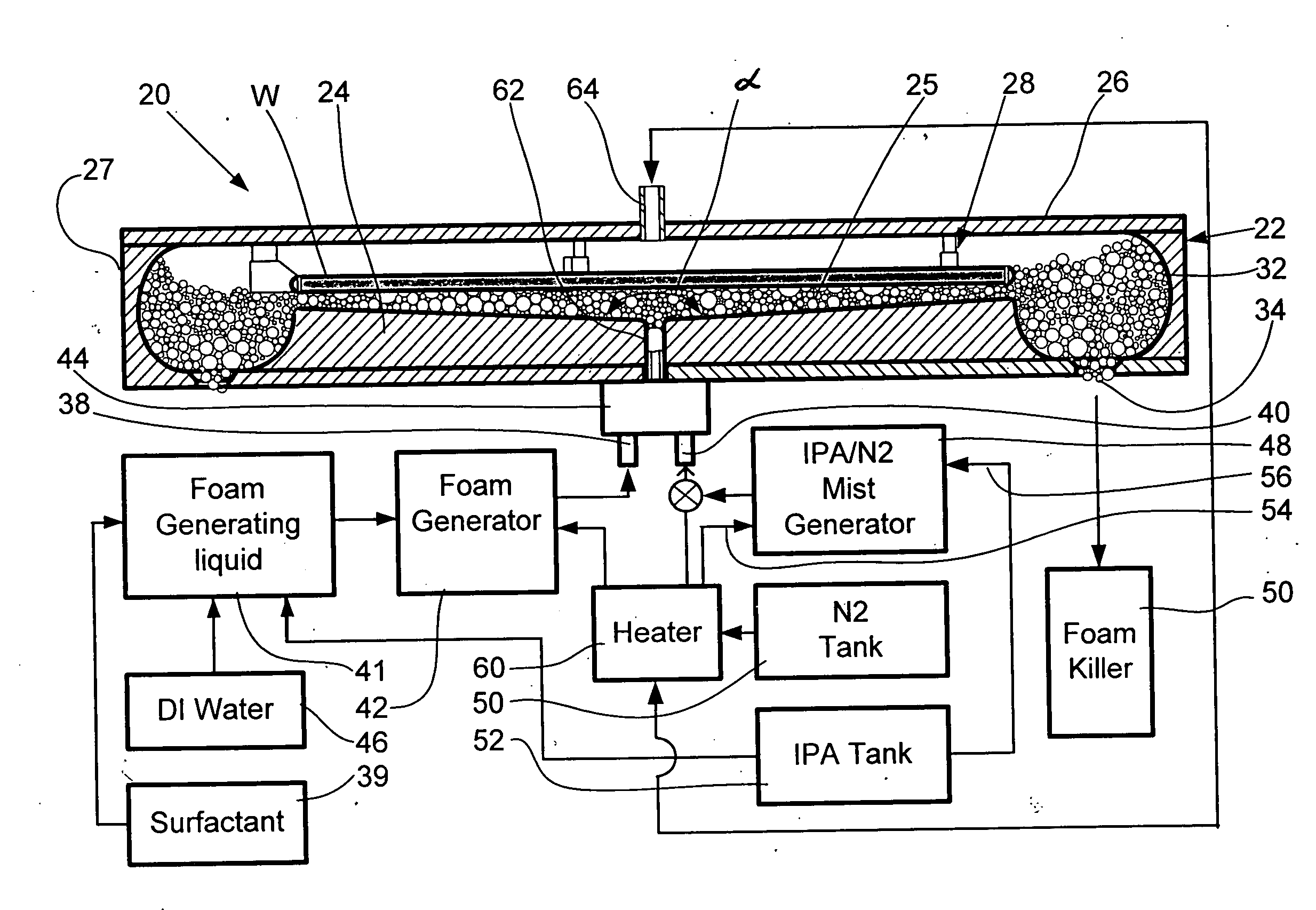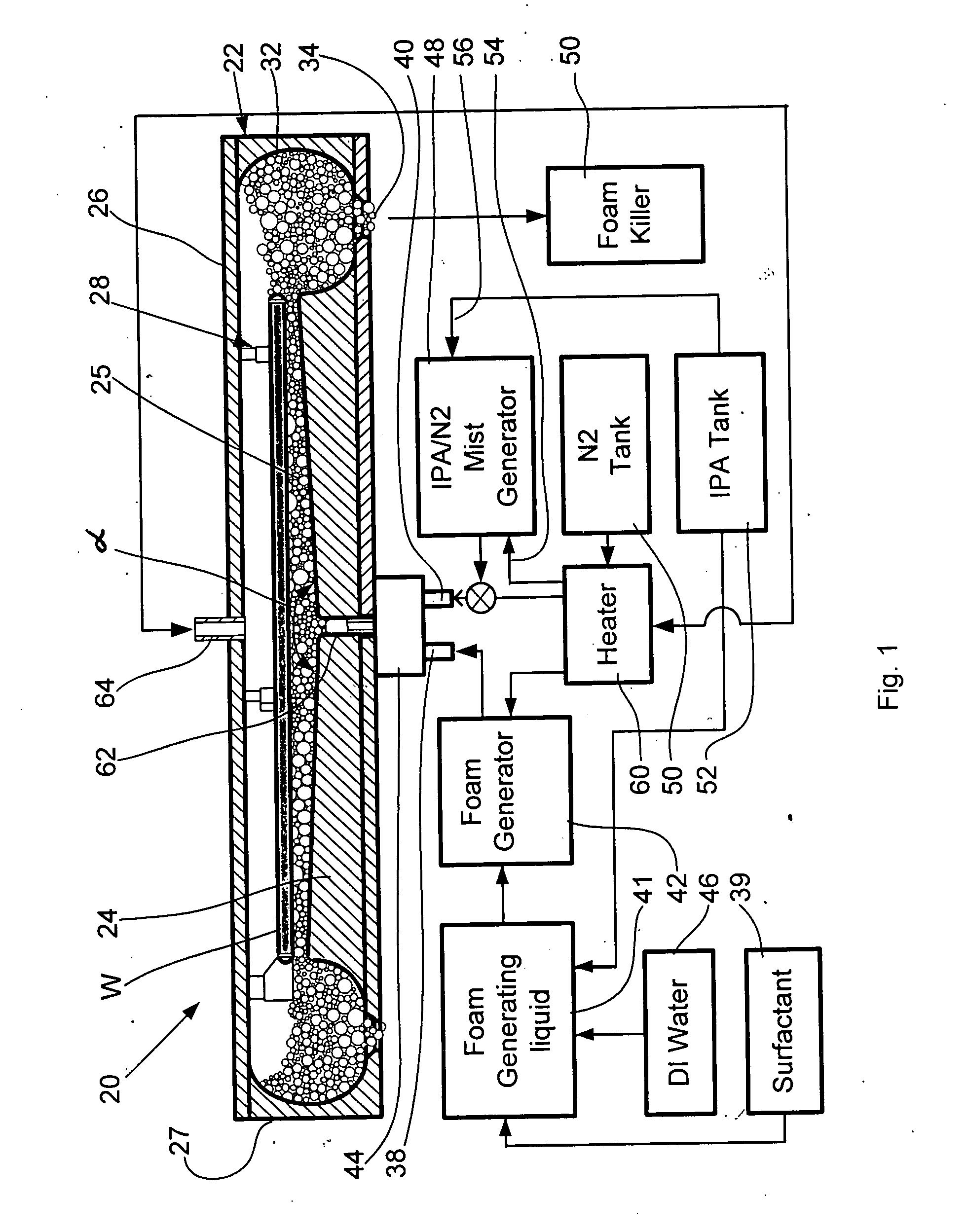Method and apparatus for foam-assisted wafer cleaning
a foam-assisted wafer and cleaning technology, applied in the field of flat objects cleaning, can solve the problems of insufficient interference with the cleaning process, and achieve the effects of improving the safety of chemical treatment, reducing the cost of such operations, and increasing the effectiveness of chemical treatment and cleaning
- Summary
- Abstract
- Description
- Claims
- Application Information
AI Technical Summary
Benefits of technology
Problems solved by technology
Method used
Image
Examples
Embodiment Construction
[0055]A general schematic view of the apparatus of the invention is shown in FIG. 1, which is a central cross-section of the apparatus. The apparatus is intended for cleaning surfaces of semiconductor wafer Ws with the use of a foam-cleaning-based technique. The apparatus, which as a whole is designated by reference numeral 20, contains a closable shallow container 22 with a funnel-shaped base plate 24, the upper surface of which is tapered radially outward from the center of the container 22 toward the periphery of the container so that in a central cross-sectional plane of the type shown in FIG. 1 perpendicular to the base plate 24 of the container 22, the aforementioned funnel shape forms an obtuse angle α ranging from 100° to an angle close to 180°. The distance from the base plate 24 to the facing surface of the wafer W gradually decreases from the center of the base plate 24 toward the periphery of the base plate 24. The obtuse angle α and the aforementioned distance are selec...
PUM
 Login to View More
Login to View More Abstract
Description
Claims
Application Information
 Login to View More
Login to View More - R&D
- Intellectual Property
- Life Sciences
- Materials
- Tech Scout
- Unparalleled Data Quality
- Higher Quality Content
- 60% Fewer Hallucinations
Browse by: Latest US Patents, China's latest patents, Technical Efficacy Thesaurus, Application Domain, Technology Topic, Popular Technical Reports.
© 2025 PatSnap. All rights reserved.Legal|Privacy policy|Modern Slavery Act Transparency Statement|Sitemap|About US| Contact US: help@patsnap.com



